How big is a 1-carat diamond? Considerations for choosing 1-carat diamond rings: size, price and weight
When purchasing diamond jewellery, customers tend to focus on the size of the diamond. However, carat is a unit of measurement for diamond weight, and carat weight is not the same thing as a diamond’s visual size. 1-carat diamonds with different 4Cs grades may have very different prices. How big is a 1-carat diamond? How much is a 1-carat diamond worth? How to choose a 3-carat diamond ring? This post will give you the answers. Read on to learn how to shop for diamonds smartly.
How big is a 1-carat diamond?
Many women dream of having a 1-carat diamond ring, but have no idea about the size of 1-carat diamond. “Carat” is a measure of diamond weight. Carat weight is not the same thing as diamond size. The perceived size of the diamond on a 1-carat diamond ring will be affected by the diamond setting and cut.
1-carat diamonds cut into different shapes may vary in diameter and size. For instance, the standard diameter of 1-carat round brilliant diamonds is 6.5mm, but the diameter of the 1-carat round diamonds sold in the market would fall between 6.3mm and 6.5mm due to cut proportions variation. For those non round brilliant cut 1-carat diamonds such as the princess, emerald, pear, marquise and oval cut diamonds, their size may also differ depending on their shapes and cut proportions.
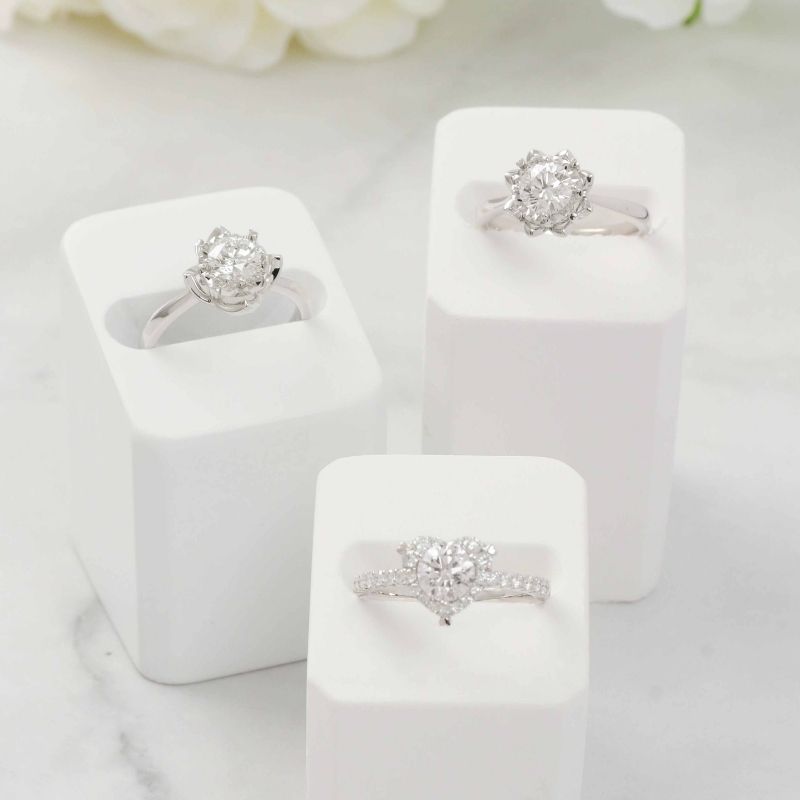 |
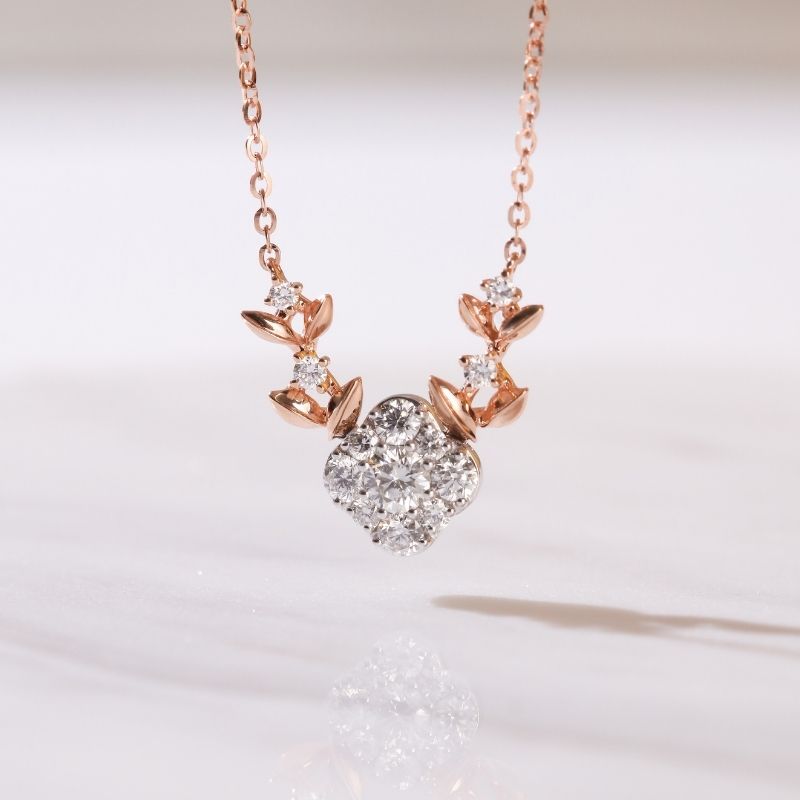 |
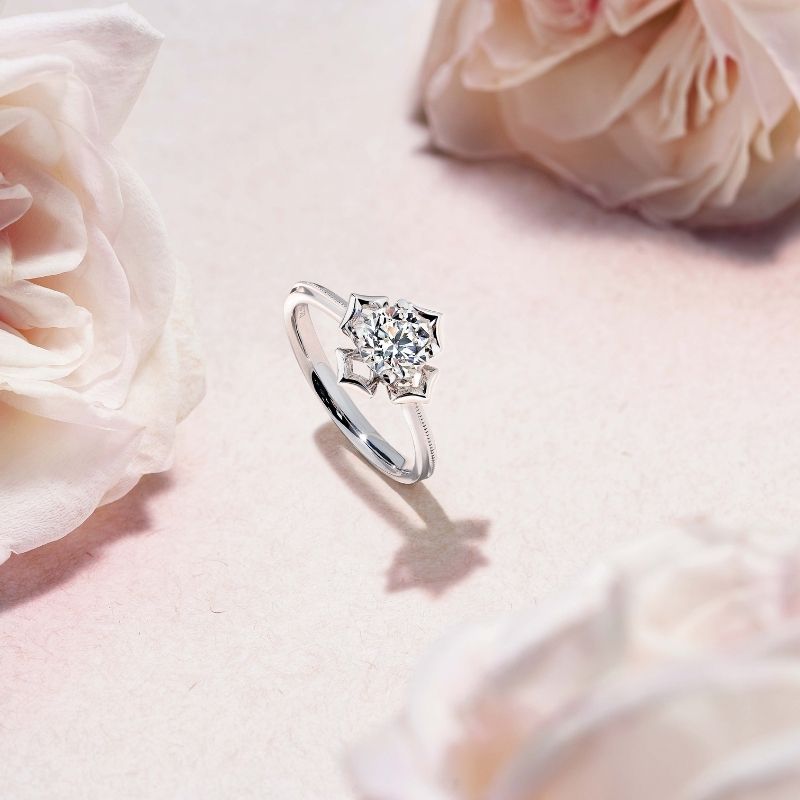 |
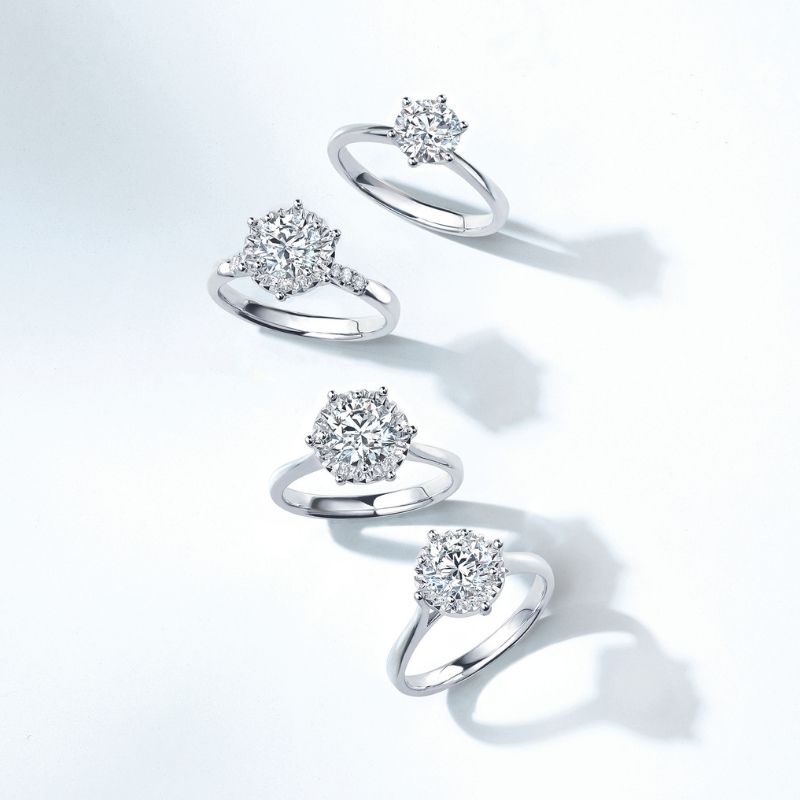 |
How much does a 1-carat diamond weigh?
A 1-carat diamond weighs 200 milligrams or 0.2 grams, and a 3-carat diamond weighs 0.6 grams. Diamond weights below 1 carat are expressed in “points”. 1 carat is divided into 100 points. A 0.25-carat diamond is also known as a “twenty-five pointer”, and a diamond that weighs 0.02 carats would be described as a “two-pointer”.
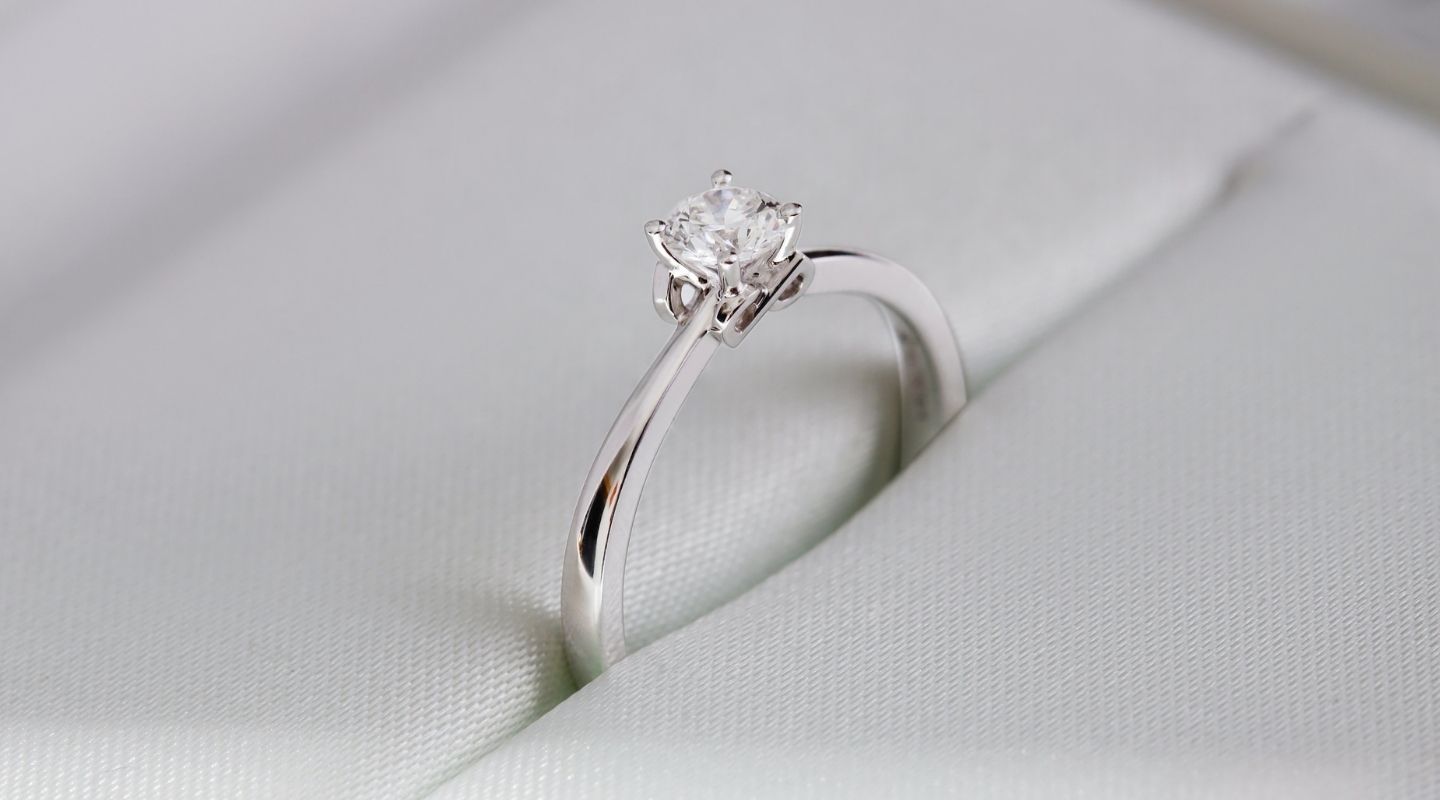
How much is a 1-carat diamond worth?
All else being equal, diamond price increases with diamond carat weight. However, why the 1-carat diamonds can have very different prices? Because the price of a 1-carat diamond is determined by the standard 4Cs, which assess the diamond for carat weight, color, clarity and cut:
- Carat Weight: Carat is the unit of weight for diamonds. Diamond value increases as weight increases
- Clarity: Clarity is graded on the basis of the size and quantity, etc. of the inclusions and blemishes contained in the diamond. The clarity scale contains 11 grades - Flawless (FL), Internally Flawless (IF), Very, Very Slightly Included (VVS1 and VVS2), Very Slightly Included (VS1 and VS2), Slightly Included (SI1 and SI2) and Included (I1, I2, and I3). The fewer inclusions within a diamond, the higher its clarity grade and value.
- Color: The diamond color grades on the D-to-Z color scale range from colorless, near colorless, faint yellow, very light yellow to light yellow. The closer a diamond is to colorless, the rarer and more valuable it is.
- Cut: Cut refers to the cut proportions, symmetry, finish and polish, etc. of the diamond’s facets. The cut of a diamond can influence the diamond’s fire and brilliance. The cut grades range from excellent, very good, good, fair to poor. Excellence is the top grade in the cut scale. The higher the cut grade, the more valuable the diamond.
When buying a diamond or diamond jewellery, people tend to focus on carat weight, color, clarity and cut, and ignore an important factor - diamond fluorescence. Diamond fluorescence refers to the diamond’s reaction under ultraviolet light. Ideally, no or faint fluorescence is visible when exposed to ultraviolet rays so that the diamond can exhibit beautiful fire. DiaPure Collection only selects high-quality diamonds with none or faint fluorescence to present you stunning diamonds as pure as water.
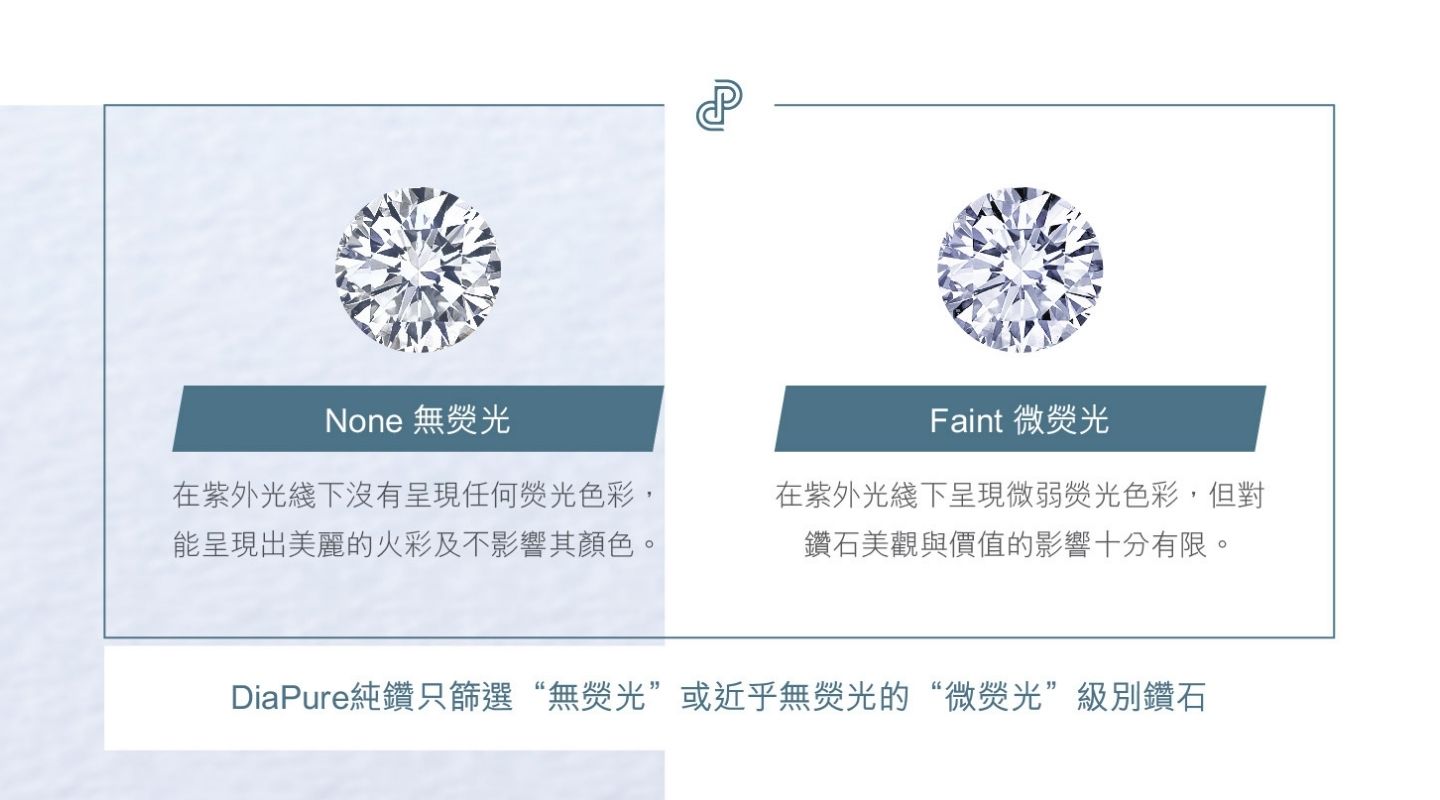
Diamonds of equal carat weight can have very different values depending on their grading. For example, the price of 1-carat diamonds can vary from $40,000 to $200,000, and the price of 3-carat diamond rings of different grades can differ by nearly $1 million. Diamond grading shall be conducted by professional diamond graders. When buying a 1-carat diamond ring, you may pay attention to the 5th “C” (Certification) to check if the diamond has a diamond grading certificate issued by GIA, IGI, HRD, NGTC, GDTC or GTC in Mainland China, or China Gems Laboratory Limited, etc.
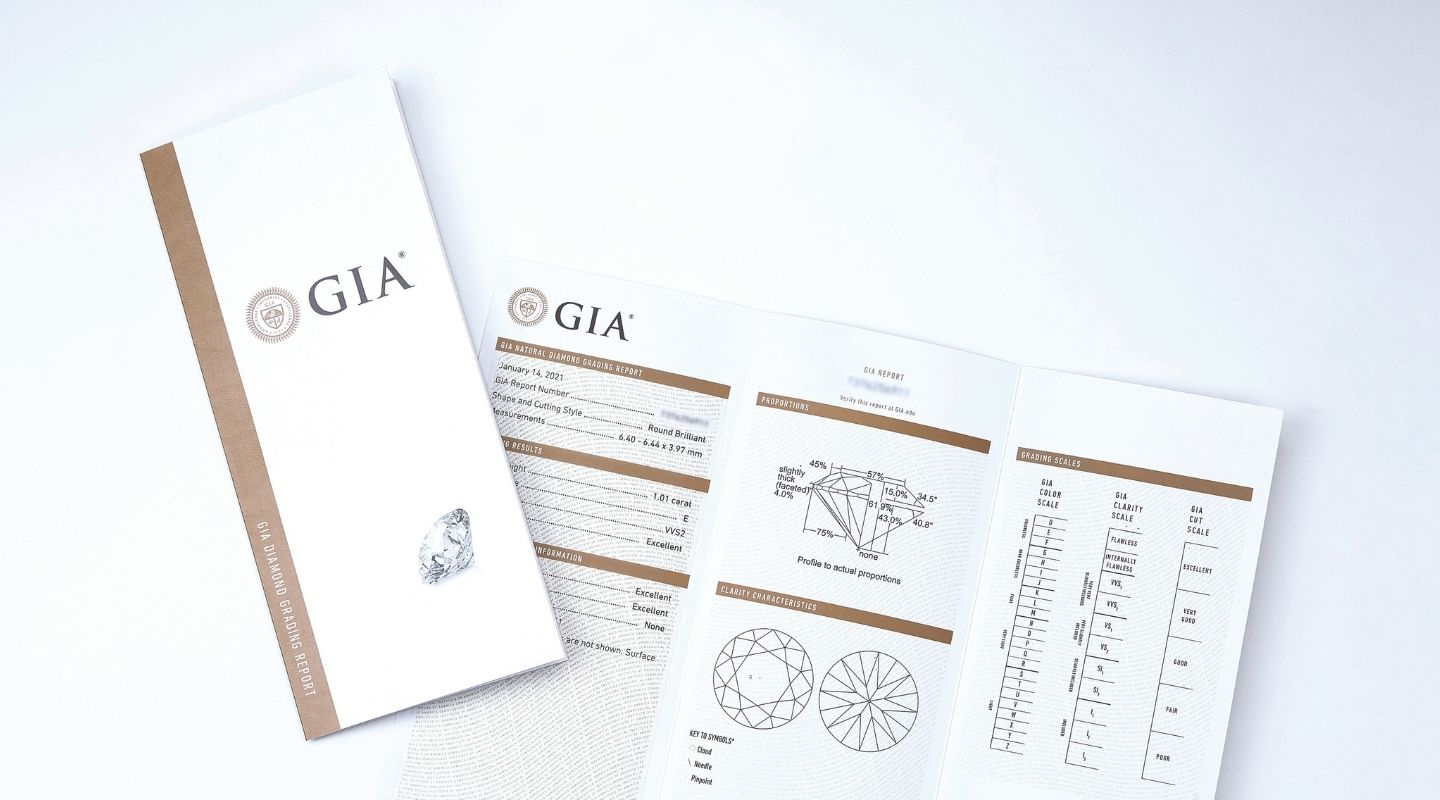
If you plan to buy a 1-carat diamond as a store of value, it is recommended to purchase a diamond a bit larger than a 1-carat diamond. For example, a 1.03-carat or 1.05-carat stone or even a 1.5-carat diamond will be a good choice. Once the culet of a 1-carat diamond is damaged and has to be re-polished, it might result in a downgrade of the 1-carat diamond to a stone weighing less than 1 carat and a significant decrease in the diamond’s price. If a rough diamond is cut according to standard proportions, the diamond over 1 carat may be downsized to a stone under 1 carat, thereby greatly affecting its value.
Lukfook Jewellery’s Patented “Shiny Diamond Setting”
Lukfook Jewellery’s patented “Shiny Diamond Setting” can enhance the visual effect of the main stone. It enlarges the appearance of 0.50-carat diamond to that of a 1-carat diamond to showcase the brilliance of the sparkling diamond. Crafted with the “Shiny Diamond Setting”, the Love is Beauty Collection and Hexicon Collection offer a wide selection of diamond rings, diamond earrings, diamond pendants, diamond bangles and diamond bracelets. Celebrate your moments of love with a 0.50-carat pendant or a 1-carat diamond ring.
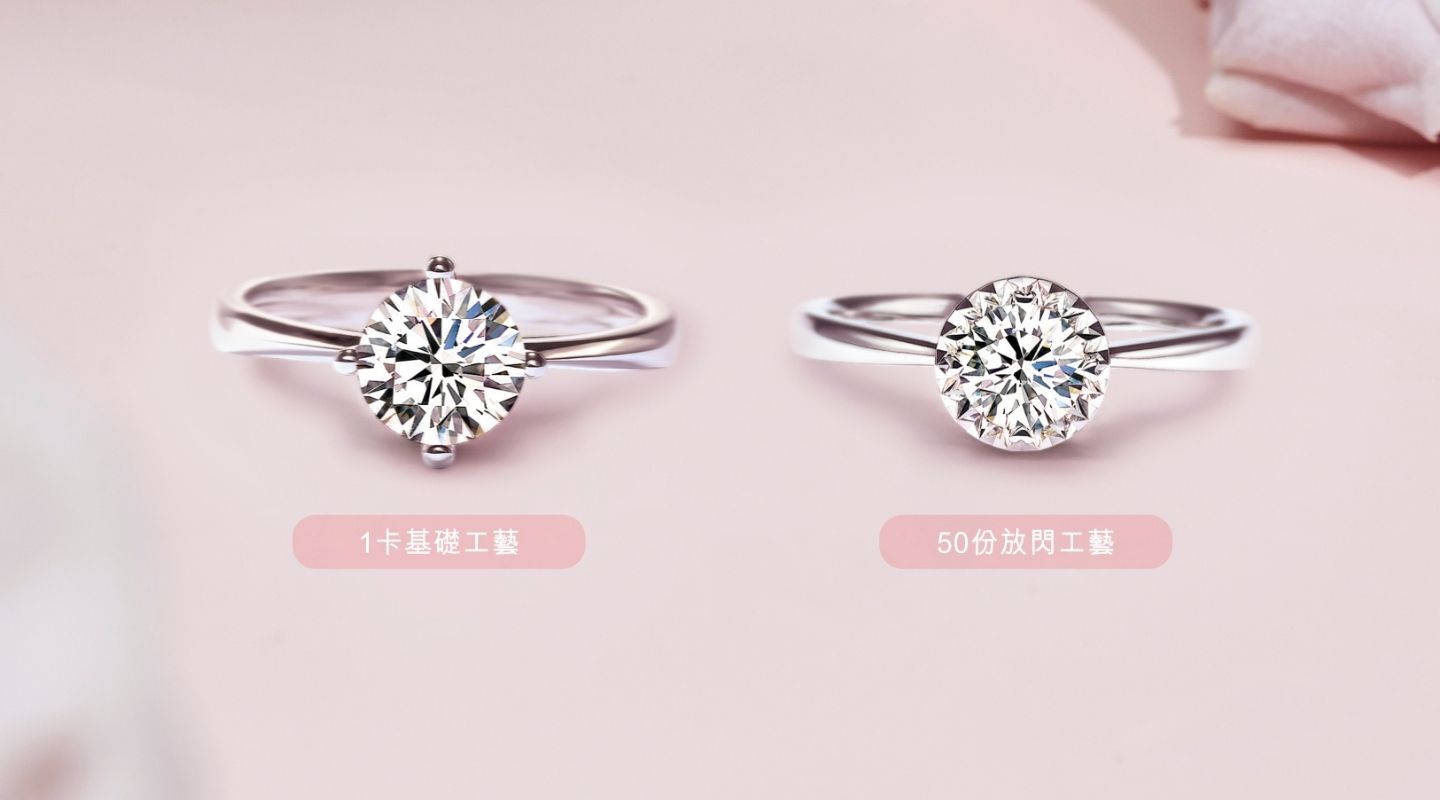
Lukfook Jewellery also curates a selection of diamond jewellery with the DiaPure Collection, Wedding Collection, Dear Q Collection and Love Forever Collection, etc.
Visit the product page to learn more about the latest 1-carat diamond rings, 1-carat diamond earrings and 1.50-carat diamonds, and choose your own stunning diamonds.
How big is a 1-carat diamond? Considerations for choosing 1-carat diamond rings: size, price and weight
When purchasing diamond jewellery, customers tend to focus on the size of the diamond. However, carat is a unit of measurement for diamond weight, and carat weight is not the same thing as diamond’s visual size. 1-carat diamonds with different 4Cs grades may have very different prices. How big is a 1-carat diamond? How much is a 1-carat diamond worth? How to choose a 3-carat diamond ring? This post will give you the answers. Read on to learn how to shop for diamonds smartly.
How big is a 1-carat diamond?
Many women dream of having a 1-carat diamond ring, but have no idea about the size of 1-carat diamond. “Carat” is a measure of diamond weight. Carat weight is not the same thing as diamond size. The perceived size of the diamond on a 1-carat diamond ring will be affected by the diamond setting and cut.
1-carat diamonds cut into different shapes may vary in diameter and size. For instance, the standard diameter of 1-carat round brilliant diamonds is 6.5mm, but the diameter of the 1-carat round diamonds sold in the market would fall between 6.3mm and 6.5mm due to cut proportions variation. For those non round brilliant-cut 1-carat diamonds such as the princess, emerald, pear, marquise and oval cut diamonds, their size may also differ depending on their shapes and cut proportions.
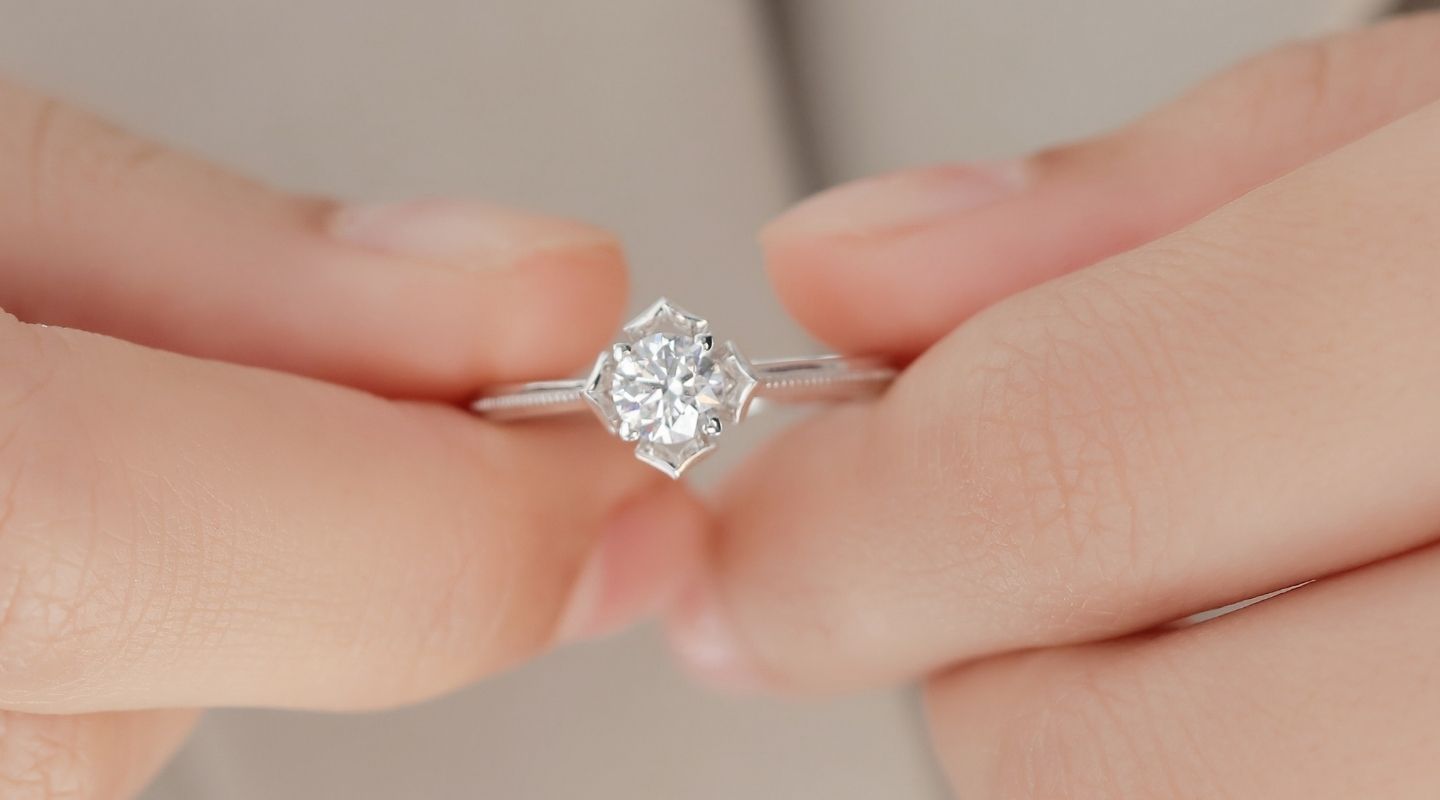
How much does a 1-carat diamond weigh?
A 1-carat diamond weighs 200 milligrams or 0.2 grams, and a 3-carat diamond weighs 0.6 grams. Diamond weights below 1 carat are expressed in “points”. 1 carat is divided into 100 points. A 0.25-carat diamond is also known as a “twenty-five pointer”, and a diamond that weighs 0.02 carats would be described as a “two-pointer”.

How much is a 1-carat diamond worth?
All else being equal, diamond price increases with diamond carat weight. However, why the 1-carat diamonds can have very different prices? Because the price of a 1-carat diamond is determined by the standard 4Cs, which assess the diamond for carat weight, color, clarity and cut:
Carat Weight: Carat is the unit of weight for diamond. Diamond value increases as weight increases.
Color: The diamond color grades on the D-to-Z color scale range from colorless, near colorless, faint yellow, very light yellow to light yellow. The closer a diamond is to colorless, the rarer and more valuable it is.
Clarity: Clarity is graded on the basis of the size and quantity, etc. of the inclusions and blemishes contained in the diamond. The clarity scale contains 11 grades - Flawless (FL), Internally Flawless (IF), Very, Very Slightly Included (VVS1 and VVS2), Very Slightly Included (VS1 and VS2), Slightly Included (SI1 and SI2) and Included (I1, I2, and I3). The fewer inclusions within a diamond, the higher its clarity grade and value.
Cut: Cut refers to the cut proportions, symmetry, finish and polish, etc. of the diamond’s facets. The cut of a diamond can influence the diamond’s fire and brilliance. The cut grades range from excellent, very good, good, fair to poor. Excellence is the top grade on the cut scale. The higher the cut grade, the more valuable the diamond.
When buying a diamond or diamond jewellery, people tend to focus on carat weight, color, clarity and cut, and ignore an important factor - diamond fluorescence. Diamond fluorescence refers to the diamond’s reaction under the ultraviolet light. Ideally, no or faint fluorescence is visible when exposed to ultraviolet rays so that the diamond can exhibit beautiful fire. DiaPure Collection only selects the high-quality diamonds with none or faint fluorescence to present you stunning diamonds as pure as water.

Diamonds of equal carat weight can have very different values depending on their grading. For example, the price of 1-carat diamonds can vary from $40,000 to $200,000, and the price of 3-carat diamond rings of different grades can differ by nearly $1 million. Diamond grading shall be conducted by professional diamond graders. When buying a 1-carat diamond ring, you may pay attention to the 5th “C” (Certification) to check if the diamond has a diamond grading certificate issued by GIA, IGI, HRD, NGTC, GDTC or GTC in Mainland China, or China Gems Laboratory Limited, etc.

If you plan to buy a 1-carat diamond as a store of value, it is recommended to purchase a diamond a bit larger than a 1-carat diamond. For example, a 1.03-carat or 1.05-carat stone or even a 1.5-carat diamond will be a good choice. Once the culet of a 1-carat diamond is damaged and has to be re-polished, it might result in downgrade of the 1-carat diamond to a stone weighing less than 1 carat and a significant decrease in the diamond’s price. If a rough diamond is cut according to standard proportions, the diamond over 1 carat may be downsized to a stone under 1 carat, thereby greatly affecting its value.
Lukfook Jewellery’s Patented “Shiny Diamond Setting”
Lukfook Jewellery’s patented “Shiny Diamond Setting” can enhance the visual effect of the main stone. It enlarges the appearance of 0.50-carat diamond to that of a 1-carat diamond to showcase the brilliance of the sparkling diamond. Crafted with the “Shiny Diamond Setting”, the Love is Beauty Collection and Hexicon Collection offer a wide selection of diamond rings, diamond earrings, diamond pendants, diamond bangles and diamond bracelets. Celebrate your moments of love with a 0.50-carat pendant or a 1-carat diamond ring.

Lukfook Jewellery also curates a selection of diamond jewellery with the DiaPure Collection, Wedding Collection, Dear Q Collection and Love Forever Collection, etc.
Visit the product page to learn more about the latest 1-carat diamond rings, 1-carat diamond earrings and 1.50-carat diamonds and choose your own stunning diamonds.








